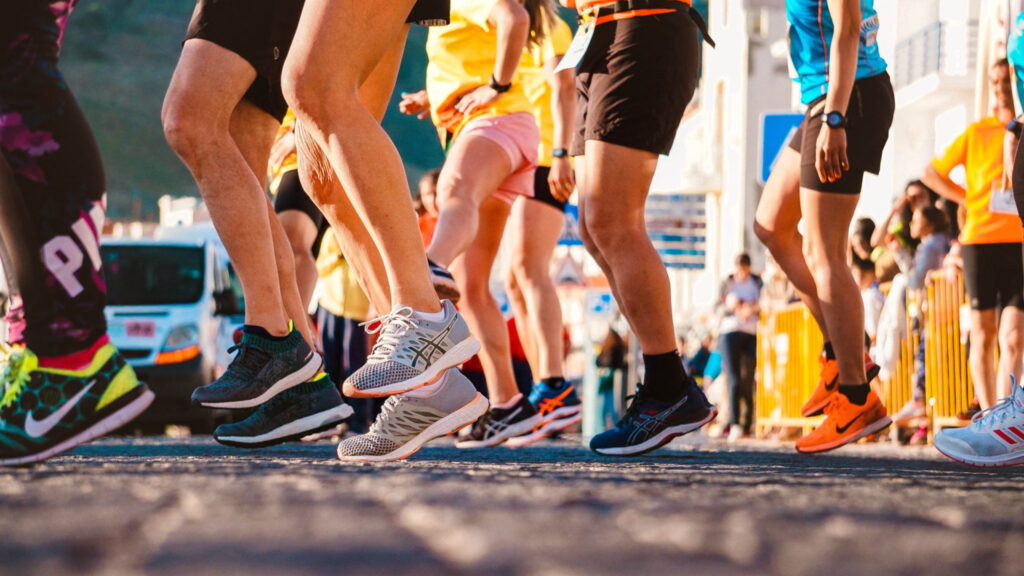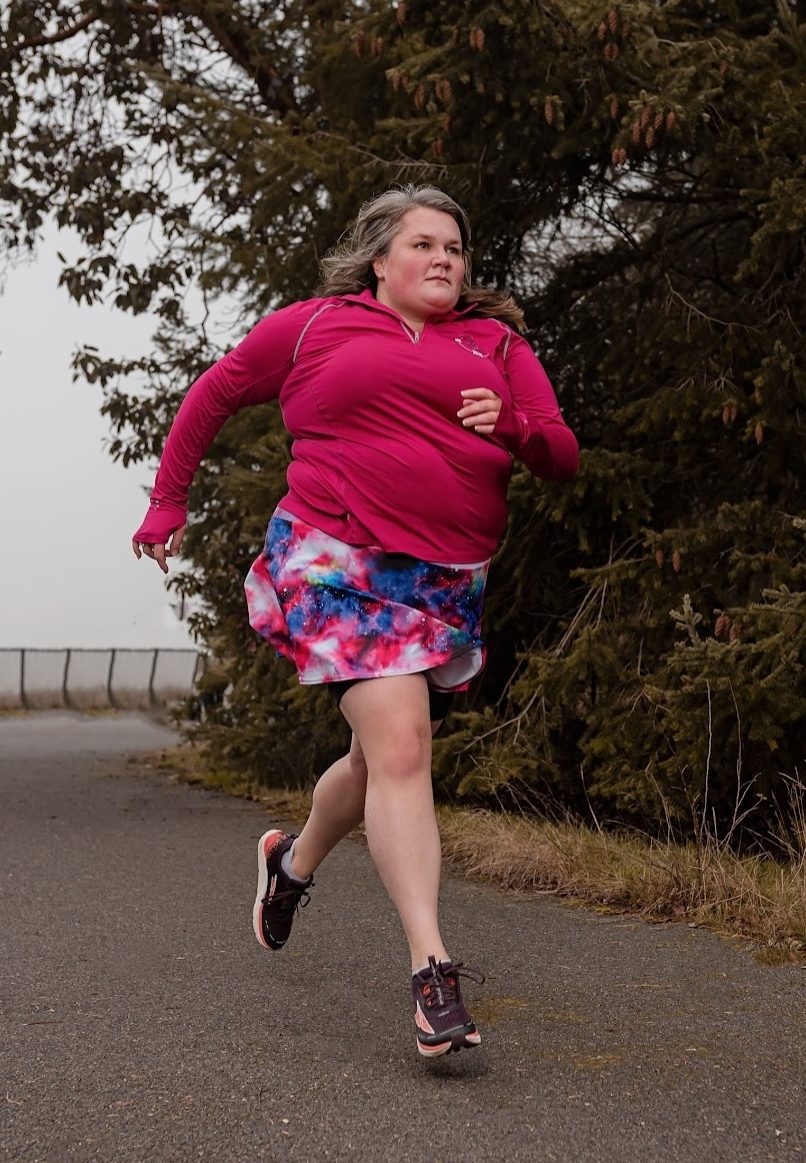Let’s Talk About Running Shoes

As runners, our feet are our instruments, aren’t they? As such, we need to take care of them. I write ad nauseam about how important strength training is, and that absolutely includes our feet. You should be doing daily exercises to maintain your foot strength. Let’s talk about running shoes and at the end of this article I’ll include a quick list of easy daily exercises to help you strengthen your feet.
Let’s Talk About The World of Running Shoes
In addition to strength training, we absolutely need to pay attention to, and invest in, the shoes we wear when we run. Here, however, is where we can go off the rails – because have you SEEN how many shoes are on the market for runners?
If you’ve paid any attention to elite runners, you’ve probably heard about carbon plates and “super shoes” and all kinds of features that might end up being confusing. Even if you haven’t explored the super shoes, you’ve probably heard about neutral or stability shoes, cushioned or barefoot shoes. Add in wide or narrow widths, gel and foam and toe boxes, oh my!
It’s enough to make you throw up your hands and just head out barefoot. (Which is a perfectly acceptable choice for some people.)
Can’t we simplify this whole shoe thing for those of us who are new, slower, or larger-bodied runners? You’ve come to the right place.
Getting Started: Local Running Store Tips
First, do some searching for your local running store. Most stores will do a simple gait analysis for you, which will possibly have you run barefoot, and then in your shoes, and the employee at the store will determine which type of shoe you need. Some stores have even more technologically advanced equipment that can scan your feet, video-record your gait and analyze it, and can even create custom insoles for you. The employee will usually tell you if you pronate (your feet turn inward at the arch), supinate (feet turn outward at the arch), or if you have a neutral gait, then recommend a type of shoe. If you have this resource, use it! It’s free.
(Courtesy note: If you take advantage of this service at a running store, and you choose not to purchase shoes for budget or other reasons, I always budget a little money for a sunglasses, fuel, or hat purchase, just to thank the store employee for their time. This isn’t required, but it is helpful.)
ADVERTISEMENT

Choosing the Right Shoe: Practical Advice
After the evaluation, try on several shoes. Protip: Please do NOT choose your shoes based on color. You might get lucky and find a color you like, but the reality is, this shoe is a tool, and you need the right tool for the job. It doesn’t matter if your socket wrench is black or silver. Spend at least 30 minutes at the store, trying on at least three, if not more, brands and styles of shoe. Run in each of them, and really pay attention to how they feel. If you aren’t sure about a couple of pairs, put one of each on each foot and try them out that way. Honestly, most brands of running shoes, especially those found in a running-specific store, are going to be good shoes for running. That doesn’t mean that they will be good for you, your feet, or your running.
As such, while trying out shoes, make sure there is ZERO pain or rubbing. Shoes should NOT have to be broken in. You should be able to do a long run straight out of the store without any irritation or blistering. Check with the store about their return policy, in case this happens, because a shoe that causes you pain is not the shoe for you. Some stores offer 30-day return policies, but you can only run indoors. Others offer a VIP program that allows 90 days to return, and you can run wherever you want. Check with the store before you purchase.
The Trial and Error of Finding Your Perfect Fit
There are many different kinds of shoes to choose from, and it is truly a process of trial and error to figure out which ones work for you. Often, you’ll find a brand and style you love, and the manufacturer will discontinue it to release the next year’s model. This is your chance to score some good deals on your favorite brand, and stock up. But know that you may love a brand currently and, in the future, it may change and you’ll have to find something new. Just be aware of this and be ready when it happens.
Also, if you don’t have a running store near you, it’s going to take a little longer to figure out what type of shoe works best for you. Some online research as to the recommended brands by magazines such as Runner’s World can be helpful, so you can check out some of those brands at local shoe stores. Brooks, Asics, Hoka, and Saucony are just a few of the brands I’ve used and loved. Try a few and see how they feel, and make sure you can return them if they don’t work out.
Considerations for Plus-Sized/Fat Runners
A note for plus-sized/fat runners: Shoes will probably not last as long as the manufacturer’s recommendations for people in larger bodies. Shoe companies will often say that shoes should last 4-500 miles, but I and many of my clients, as well as other larger-bodied runners, often struggle to get 200 or more miles. This makes sense due to the impact of larger bodies on the foam. Be aware that replacing your shoes may happen sooner than your smaller runner friend. It requires more of an investment, but your body, and the sport you’ve chosen because you love it, is worth it.
Quick Daily Exercises for Stronger Feet
- 100 toe walks
- 100 heel walks
- 50 seated point-flexes
- 50 ankle circles (both directions)
- 50 toe towel/marble pickups
ADVERTISEMENT

Marci Braithwaite is an RRCA- and USATF-certified running coach who focuses on beginner runners and athletes in larger bodies using Size-Inclusive and HAES-aligned principles. She has completed over 100 races of various distances in her 12 years of running, including a marathon, and she has her sights set on completing a 50k in 2023








